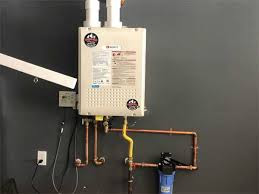5 Tips about ceiling fan installation
Ceiling fan installation is a process that takes some time to complete, but it can be done by anyone. It's important to note that you may not need an electrician for this job if you know what you're doing. In order to install the ceiling fan, first turn off the power in your house at the breaker panel or fuse box then make sure there are no objects blocking access to where you want it installed. Next, take down any light fixtures or anything else on the ceiling and remove insulation from around your new fixture before installing hardware and mounting the unit onto a secure surface like drywall or wood studs. The last step is wiring up your new fixture with electrical wire using insulated cable connectors - don't forget to ground!
1. How to choose a ceiling fan
Choosing the right ceiling fan can be a difficult task. A good place to start is by understanding your needs. Are you looking for something that will cool down an entire room, or just provide some additional air circulation? How big is the room? Do you want something with a more modern look, or do you prefer classic style? Once you answer these questions, it's time to choose between three types of fans: Ceiling-mounted (also called "ceiling hugger" or "low profile"), flush mount and semi-flush mount. You'll find other options depending on what size of blade span and light kit type are important to you.
2. Installation instructions for the ceiling fan
Browsing through the instructions on how to install a ceiling fan is not for the faint of heart. However, we have compiled some easy to follow steps that will make your installation go smoothly.
A few key things you will need are: A Phillips head screwdriver, ladder, and measurements from your ceiling. You'll also need a tape measure and at least one light bulb for each fixture in the room (for example, if there's two fixtures in the dining room then you'll need two light bulbs). Preparation before installation is crucial because once it's installed it can be difficult or impossible to move!
This blog post has been created so that you don't have to worry about having no idea where to start with installing a fan.

3. Tips and tricks for getting the most out of your new ceiling fan
The best part about ceiling fans is that they are really easy to install and use! For those of you w
ho have never used a ceiling fan before, here are some tips on how to get the most out of your new one. The first thing you want to do is make sure that there is at least 16 inches between the blade tip and any walls or furniture. This will help create circulation in your room and keep it cool during the summer months. When installing a ceiling fan, it's important to remember that all blades should be spinning counterclockwise. This makes for better airflow throughout your home, which can also save energy by keeping things cooler longer than they would be otherwise! Lastly, don't forget to turn off the lights when using your
4. Common mistakes when installing a ceiling fan
When installing a ceiling fan, there are many mistakes that can be made. It is important to take the time and do it correctly when you install your new or replacement fan. You will have an easier installation, less risk of injury, and more efficient use of your energy if you follow these tips for installation.

5. Why you should hire an electrician to install your new ceiling fan
If you're planning on installing a ceiling fan in your home, then you should hire an electrician. Oftentimes homeowners attempt to install their own fan and end up causing more harm than good. Installation can be very difficult for someone who doesn't have the expert safest ceiling fan installation license or knowledge of wiring that an electrician does. If you're not sure about for call an professional electrician, here's a list of reasons why it's best to do so: 1) You want the possible 2) You want peace of mind knowing that everything is done properly 3) You don't want any mistakes 4) You don't know how to wire a light fixture 5) The size of your ceiling fan exceeds standard dimensions 6) Your home has.
Conclusion:
Ceiling fan installation is a job that should not be taken lightly. It's important to understand the process and have all of your tools handy before you start, as well as making sure that there are no other people or animals in the room while you're working with electricity. If this sounds like something you'd like to learn more about, we've provided some helpful links below!
Author Bio:- Robert Wong
Robot is a marketing manager at EZ Electric. He has an interest in writing articles related to HVAC installation, maintenance, and repairs. The HVAC system has made our life convenient regardless of the climatic changes. Read Robot’s articles to know step-by-step installation guide for ceiling fan, smoke detector, lighting and electrical appliances in California as well as how to repair them in case of malfunctioning or breakdown.



Comments
Post a Comment